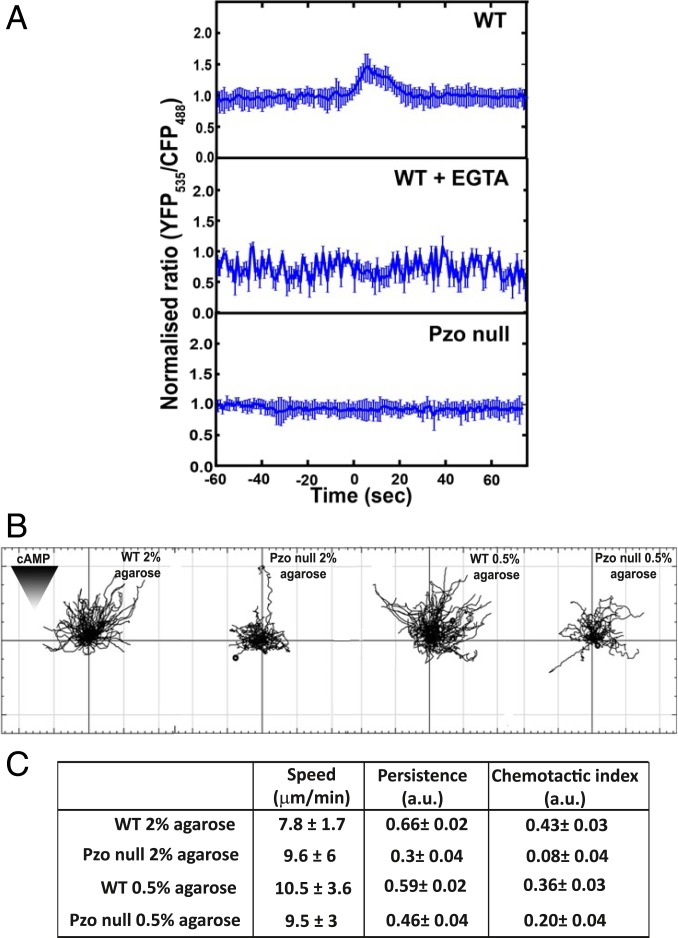Fig. 6.
The Piezo channel is required for the calcium response to load and for efficient chemotaxis. (A) Loading causes a transient increase in cytosolic calcium, which depends on extracellular calcium and the Piezo channel. Changes in cytoplasmic calcium were detected by microscopy using the Cameleon FRET-based sensor. The normalized ratio of YFP (535 nm)/CFP (485 nm) indicates the cytosolic calcium concentration. Aggregation-competent cells under 0.5% agarose were subjected to a load of 400 Pa as indicated (n = 15 cells). (B) Piezo-null cells are defective in chemotaxis to cyclic AMP when constrained under agarose. Representative tracks of wild-type (WT) (strain Ax2, R.R.K. laboratory) and Piezo-null cells (PzoA− cells, strain HM1812) chemotaxing toward a cyclic-AMP source in an under-agarose assay. Agarose overlays of different stiffness (0.5% and 2% agarose with Young’s modulus of 6.6 and 73.6 kPa, respectively) were used. (C) Table of the chemotactic parameters obtained by tracking cells in an under-agarose assay. Speed was calculated by dividing the accumulated distance by total time. Persistence is defined as the ratio between Euclidian distance and accumulated distance, and chemotactic index is defined as the cosine of the angle between net distance traveled in the direction of the gradient and the Euclidian distance. Data are represented as mean ± SEM from measurements obtained for n ≥ 50 cells on at least three different days; P < 0.005, Mann–Whitney U test and one-way ANOVA.

